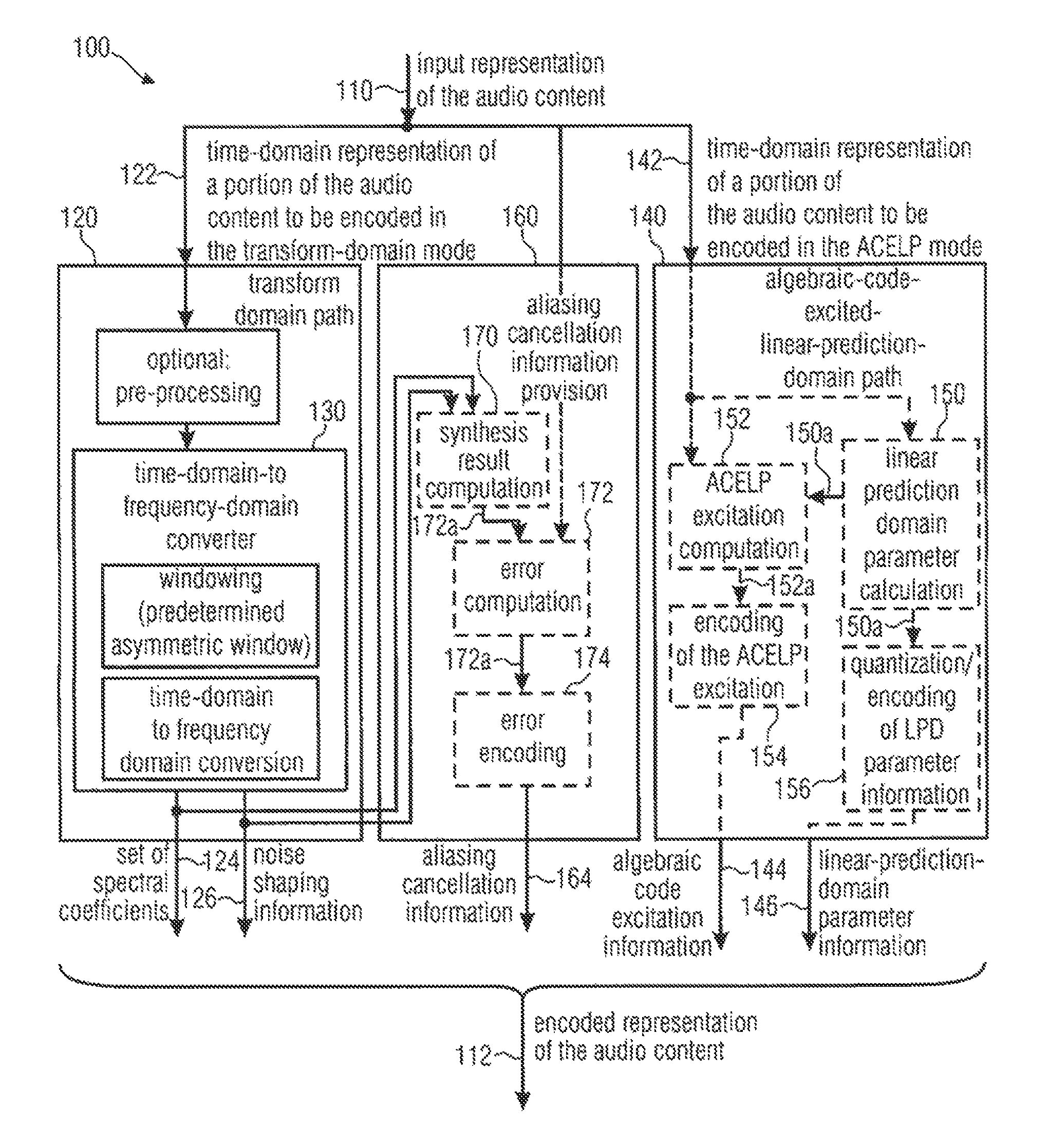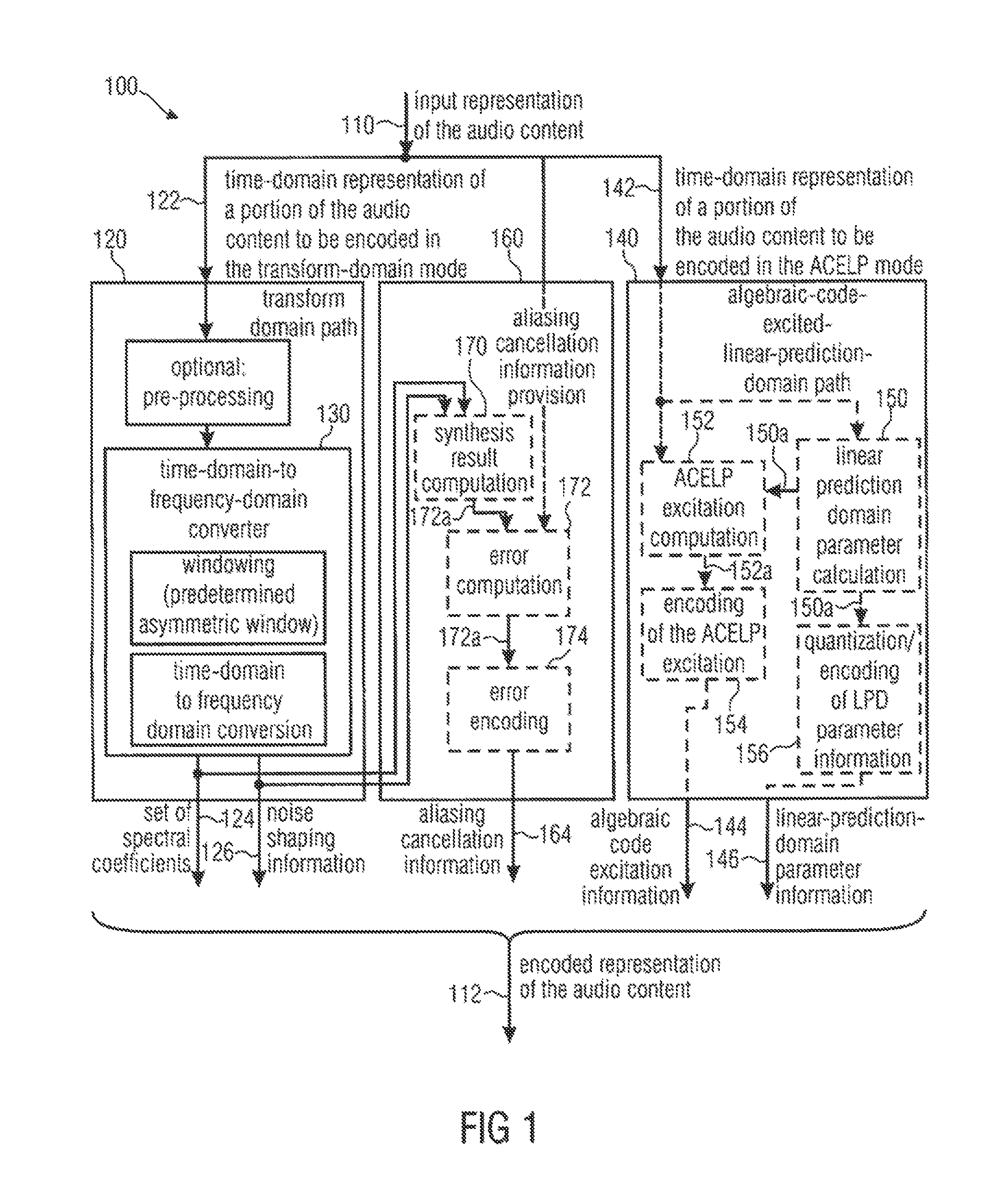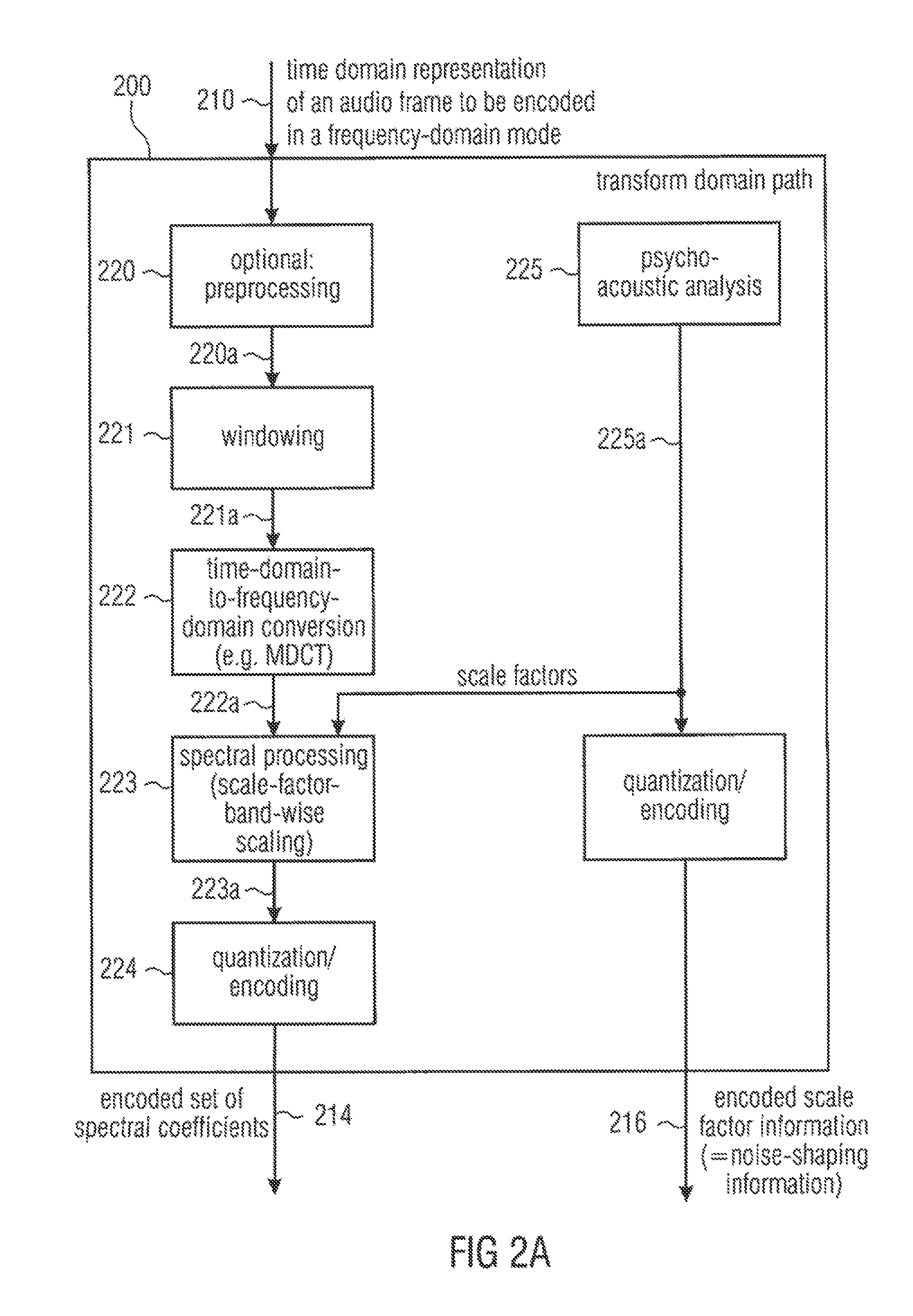Audio signal encoder/decoder for use in low delay applications, selectively providing aliasing cancellation information while selectively switching between transform coding and celp coding of frames
a low delay, encoder technology, applied in the field of audio signal encoders, can solve the problems of unpleasant user impression and low delay in such applications, and achieve the effects of enhancing coding efficiency and smoothing transitions, reducing or canceling aliasing artifacts, and avoiding inconstancies
- Summary
- Abstract
- Description
- Claims
- Application Information
AI Technical Summary
Benefits of technology
Problems solved by technology
Method used
Image
Examples
reference example 1
4.2. Reference Example 1
[0224]Unified-Speech-and-Audio-Coding (USAC)
[0225]A so-called USAC codec allows switching between a music mode and a speech mode. In the music mode, a MDCT-based codec similar to advanced audio coding (AAC) is utilized. In the speech mode, a codec similar to adaptive-multi-rate-wideband+ (AMR-WB+) is utilized, which is called “LPD-mode” in the USAC codec. Special care is taken to allow smooth and efficient transitions between the two modes, as described in the following.
[0226]In the following, a concept for a transition from AAC to AMR-WB+ will be described. Using this concept, the last frame before switching to AMR-WB+ is windowed with a window similar to a “start” window in advanced audio coding (AAC), but with no time-domain aliasing on the right side. A transition area of 64 samples is available, in which the AAC-coded samples are cross-faded to the AMR-WB+-coded samples. This is illustrated in FIG. 15. FIG. 15 shows a graphical representation of a window...
reference example 2
4.3. Reference Example 2
[0228]MPEG-4 Enhanced Low-Delay AAC (AAC-ELD)
[0229]The so-called “enhanced low-delay AAC” (also briefly designated as “AAC-ELD” or “advanced-audio-coding-enhanced-low-delay”) codec is based on a special low-delay flavor of the modified-discrete-cosine transform (MDCT), also called “LD-MDCT”. In the LD-MDCT, the overlap is extended to a factor of four, instead of a factor of two for the MDCT. This is achieved without additional delay, as the overlap is added in an unsymmetrical way and it only utilizes samples from the past. On the other hand, the look-ahead to the future is reduced by some zero values on the right side of the analysis window. The analysis and synthesis windows are illustrated in FIGS. 17 and 18, wherein FIG. 17 shows a graphic representation of an analysis window of LD-MDCT in AAC-ELD, and wherein FIG. 18 shows a graphic representation of a synthesis window of LD-MDCT in AAC-ELD. In FIG. 17, an abscissa 1710 describes a time in terms of audio...
PUM
 Login to View More
Login to View More Abstract
Description
Claims
Application Information
 Login to View More
Login to View More - R&D
- Intellectual Property
- Life Sciences
- Materials
- Tech Scout
- Unparalleled Data Quality
- Higher Quality Content
- 60% Fewer Hallucinations
Browse by: Latest US Patents, China's latest patents, Technical Efficacy Thesaurus, Application Domain, Technology Topic, Popular Technical Reports.
© 2025 PatSnap. All rights reserved.Legal|Privacy policy|Modern Slavery Act Transparency Statement|Sitemap|About US| Contact US: help@patsnap.com



